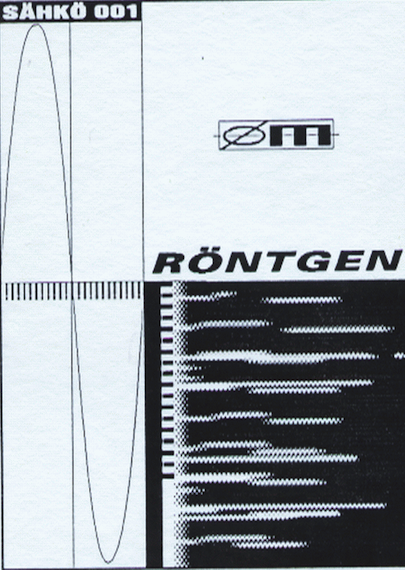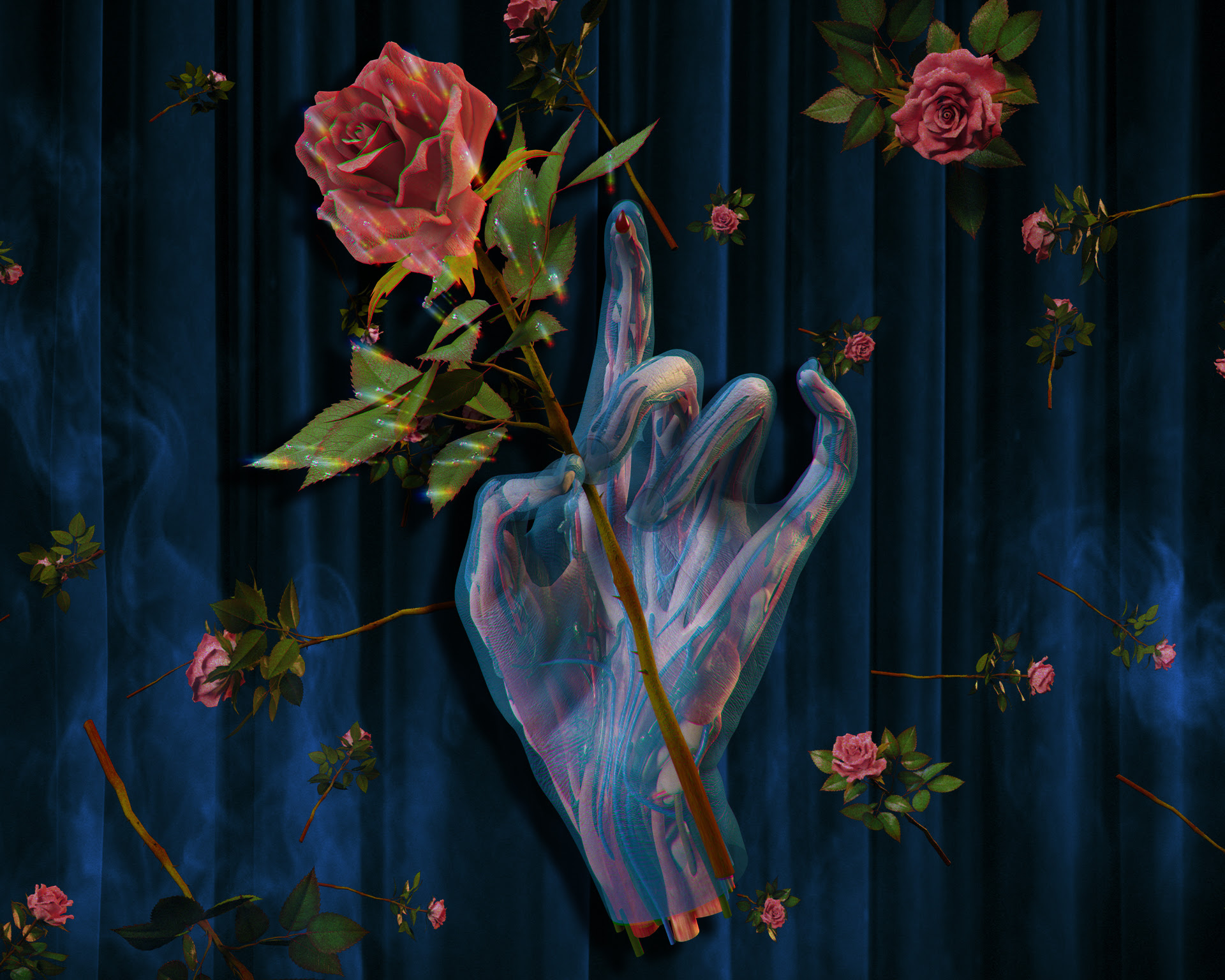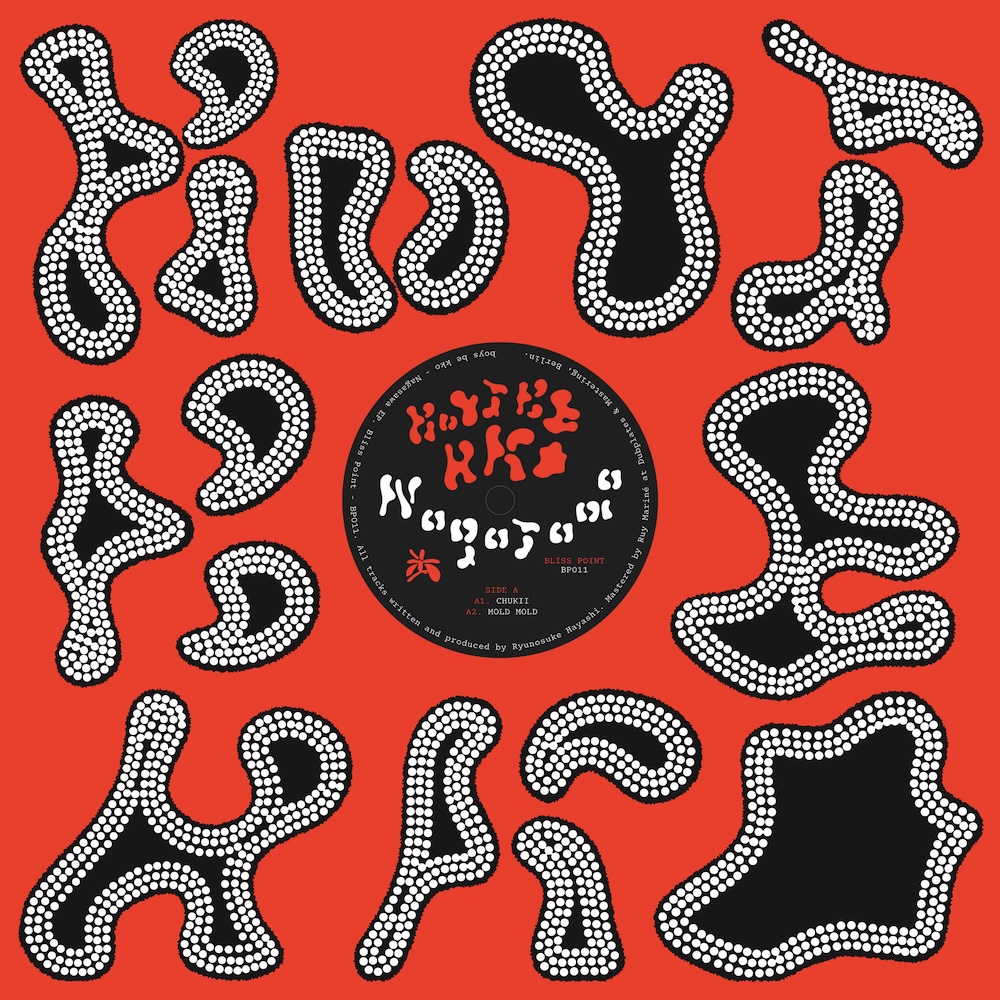The strange electricity of Sahko Records

Like any label worth its salt, Shk was founded for a distinct purpose. Initially a vehicle for Mika Vainios early productions in techno, the label has grown over the course of its 20 years existence into a pillar for artful and myriad media. The heart of its activities still lie in indulging the obsessions and explorations of Jimi Tenor and Vainio, but increasingly fresh marvels and radical curios have been introduced, enlivening the labels strong and strange essence with a mutability which has helped establish a body of work as challenging as it is divergent.
Special, interdisciplinary commissions at the Venice Biennale (The North is Protected), a soundtrack for a design exhibition (Snowcrash), the space-age synth of Martin Rev (Strangeworld) in deviant-sweetheart-crooner mode and the early tape experiments of Bruce Gilbert pre-Wire (following Brian Enos workshop at the Watford School of Art in the mid-1970s – Frequency Variation) are just some of the more enticing works in the depths of the labels catalogue. More recent successes have also added to Shks aberrant stock; in the form of Bastian Wegners disquieting noir-phantasms (Elmsfeuer) and the virtually faultless, drone-sodden, loop-lathered sultriness of Madteo (Noi No)
Its fair to say that although the label has acquired a reputation for scrupulously reduced, innovative minimalism rooted in the early Vainio material it released, its subsequent evolvement has been of maximum variety and import. Although the frequency of releases has slowed in recent years, the quality has remained. We therefore thought it a ripe time for an evaluative reflection on the label.
Since 1993 Tommi Grnlund, who set the label up with Vainio, has been at the helm. An architect and designer originally from Turku (Finlands former capital before Russian occupation) Grnlund was compelled to release Vainios work after realizing the singularity of his sound. Vainio also originated from Turku and had previous form with Grnlund in the Hyperdelic Housers collective, who threw illegal raves in Finland from 1989 until 1992, when the idea for a label evidently diverted their attention and shifted their focus; the next year five 12 inch EPs were released.
These releases were housed in monochromatic, austere designs often fronted by unlabelled, esoteric geometry and sine waves; an appropriate visual representation for the precise but paradoxically mercurial configurations of sound inside. Others bore a sparse canvas of typography and insignia but consistent throughout was the Shk stamp.
This aesthetic gave the records an industry-standard, assembly-line uniformity which was then subversively modified. Taking the fabled example of Boyd Rice (of NON fame) the label drilled extra holes into their records which allowed the novelty of playing the record off-centre in a number of different possibilities. The creative ingenuity and immaculate cult-like magnetism of Shks design at the outset and throughout its course could be attributed to either Grnlund or Vainio. Though the former seems a much more likely source, given his background in this sphere, and the fact a year earlier A.Men Architects was set up with Petteri Nisunen; an architecture and design studio that was, like Shk, based in Helsinki. The mixed media installations Gronlund has created with Nisunen also seems to have informed the direction of the label, intertwined as this work and Shks output often is, with the interaction between space and sound.

Outside the craft of design and image, the music on the pH EP by Philus (an alias of Vainio) stands out in Shks initial forays. Imposed on its cover is the visage of William Burroughs and the music seems a direct sonic extension of his vision. On the second track of the first side (A2) paranoia, delirium, and frenzy converge in a miry acid freak-out, one that hurtles along in a seizure of pulverizing pounds and handclaps. Like a recklessly measured and administered dosage, as if the fuse has well and truly blown, its the soundtrack to getting so far out and not coming back…at least for the duration of its approximate five minutes.
As well as hyper, psychoactive tumult, the next release, again featuring the fruitful collaboration of the label and Vainio (under his guise) demonstrated the expansive gamut the label and its predominant figure were interested in, a range which has remained in the works of both Vainio and the label. On the two-part compilation, Metri, a three-pronged finale of sorts sees firstly; Kentt. Within its hushed beginnings, the sound of high-pitched, faltering rotations emanates as if some kind of metal detritus is turning on a broken, uneven axis. A mass of titanic drive accumulates and eventually suppresses this cycle, before volumizing into an avalanche of brittle noise which seems to collapse in overhead, until a conclusive sibilance voids the soundscape and is left to hum like a severed transmission. Halli follows this with a crawl. A sparse passage with an audible murk punctuated by droplets which seem to echo for miles and colossal, rumbling tremors. The faint use of piano halfway through recalls Leyland Kirbys recent work as The Caretaker, if its comment on memory was taken to the next stage of decline; something nearing cerebral abyss. Like the long winters Finland experiences, and Vainio probably would have been subject to, this is sound in dead spaces absent of light.

(Accompanying image for Shk 006 – – Metri)

(Front – Shk 006)
Dayak then brings an end to the compilation, less evocative of a particular space than a scene. Cold ripples and drones in a muted dormancy, compounded with a creeping sub-bass dread. It feels as if this final end to Metri is situated on the precipice of some horror, with all the ominousness and horripilation inherent in a John Carpenter theme.
With these highlights and for much of Vainios work, theres vividity to whatever scenes, spaces or sensations are precipitated by listening. Such is this vividity that often the confines of headphones or surrounding environments are transcended to the point where the sounds begin to usurp this immediate context. At the same time, these are sounds which seem organically sourced from such environments (the tones of objects, machines and appliances as opposed to instrumentation) so its not a sedative escape, more a case of concentrated tuning, to very real, familiar emanations. Whats different in Vainios translation is how theyre brought into micro-attentive resolutions and engineered; with the resulting effect being something very cold and hard (these sounds often have an industrial texture) given a greater propensity for impression through purity and lucidity of sound. Even if this impression can be of an eerily stirring deadness as in Metris arresting conclusion.
Its clear Metris end is worlds away in tempo and energy than the aforementioned mind-melt of the pH EP. Though this contrast leads to another thread of consistency; the resounding sense that throughout Vainios work as Philus and , the slightest whispers of sound and the greatest tirades of noise are both convincingly captured, both magnified intensively. Often, this work also feels contained within chambers with acoustics which seem unparalleled in their resonances of bass; a lower end which has an unimaginable quality of depth and weight. But then in the higher regions of pitch, the tinniest of telephonic tones, and the shrillest interferences also forcefully register, as if an overloaded switchboard is harnessing the multitude of signals coming from nearby radios, modems and serversand whatever else. Whether in furious havocs or cavernous meditations theres a consistent engrossing tension that remains throughout this material, showing Vainios ability, and Shks predilection, for captivating, spectrum-wide works. This remains within Vainios work on the label, with his later work as (particularly 1997s Tulkinta) and Philus (perhaps most notably the Kolmio EP) again exhibiting similar fluctuations between opposing extremes, with cases where these incongruous moods and sounds are sometimes brought together in what seems an unprecedented proximity.

(Accompanying image for Shk 0013 – – Tulkinta)
These polar energies and intensities in the Vainio material cited and the effective execution within each is somewhat of a microcosm bearing broad relevance to Shk; a label that restlessly confounds any notion of predictability or one-dimensionality in their releases and projects. This is illustrated in the next Shk release which was the first introduction to the world of Pan Sonic; the now venerated noise-assault duo of Vainio and former Hyperdelic Houser, Ilpo Visnen. Much more of a test of endurance than anything previously released by Vainio or Shk, its conception in the midst of Philus and points to the relentless fertility of Vainio in this period, and the creative freedom and faith afforded him by the label. Although, after their first effort on Shk, the bulk of Pan Sonics output emerged from Mute offshoots (Blast First and Blast First Petite) this introduction must have been a vital incitement for further exposure and eventual acclaim; an introduction which evidently stimulated interest outside of Finland, culminating in extensive collaborations with Alan Vega, as well as a performance in an East End car park from the vantage point of an Audio Weapons Armoured Car System (i.e. an armoured car with a devastating, ear-splitting sound system apparently reserved for crowd control – presumably reserved for more extreme displays of dissent) Pan Sonics operations of extremity and their legacy of unique sonic blitzkrieg is something which can first be traced to Shk and for the brilliance of the notorious armoured-car analogy alone, Shk deserves thanks and praise – if only for its status as an introductory outlet.
For the wealth of its early output in particular, Shk has garnered an appeal which hasnt amassed widespread adulation by any means. But for many, its maintained an enduring appeal supported by a certain mystery through discretion. There isnt a great deal of up-to-date interviews and features online. No lengthy expounded ethos or self-congratulatory retrospection. The music speaks for itself and in doing so has made Shk one of the more vital, long-standing labels around. Also implicit is the sense that Gronlunds background in object-making for art installations and his design experience is something advantageously applied to the labels produce; a refined quality of impactful minimalism through concision, mirroring the nature of the music.
Running alongside the more serious endeavours of Sahkos main operations since the beginning, has been the sub-label Puu (no laughing at the back) Headed by Jimi Tenor, the pickings are less profuse and timeless than its parent label. But the loose license given to Tenor, similarly to Vainio, has seemingly given him free reign to delve into an array of personal projects, and curate an imprint which is inconsistent but never dull. Lounge, jazz, afro-beat, house, soul all receive Tenors attention and his bizarre inflection. Although theres some dated misfires to sift through in the labels early material there are Tenors collaborations with Maurice Fulton, one of which, RWJs Joy in My Life, is an infectious, anthemic, primetime high with an azure hue; instant and dazzling in its ecstasy.
Puu was also home to Martin Revs latter-day mutant teen-pop on Strangeworld (available for full stream here) where the precious, sweetheart drama conjured by the band at the dance is handled by the dropout who adapts the tradition, with sweet professions warped by drum machines at full tilt and oceans of reverb (a sound which occasionally recalls Arthur Russells World of Echo in its concurrent bedroom intimacy and entrancing, otherworldly dub) Its sound is so strange and seemingly out of another time its easy to mistake it for a reissue (It was apparently released in 2000) Whenever it was released, whenever the material was created, its a record so peculiar and idiosyncratic in its fluorescent, lovelorn amateurishness its uncertain whether it belongs to any period. All the better for it. Its presence on Puu half-excuses its earlier material; any label which brings this into the world warrants an attentive exploration.

(The heartthrob)
(Choice lyric from Trouble; Spin you through your dreams and dance all night)
Even with Puus more erratic consistency, theres an attractive playfulness and eclecticism; a subsidiary which seems to function as a complimentary counter to the more straight edge experiments of Shk.
With Tommi Grnlund and Harri Hnnikinen in control, another Shk sub-label, Keys of Life, has been predominantly focused on variations of house since 1999. Although theres a promising familiarity to the names on the roster (Skatebrd and Jori Hulkkonen being two which stand out) the imprints inception and initial trajectory seems to have fallen at a time (late 90s/early 00s) when house music wasnt exactly firing on all cylinders. This seems to have dictated the less than surefooted direction the label has taken since. Though this may be a case of wilful solipsism, listening to this material now it hasnt fared well. Theres an insipidity present and it seems the material hasnt transcended an ephemeral dancefloor functionality, unlike most of Vainios work in similar spheres on the main label. Thats not to say there arent exceptions. The two Tin Man releases, Keys of Life Acid and Love Sex Acid, have all the Chicago and Acid classicism of Phuture and Virgo Four. Though despite being prone to the same kind of extended 303-funk and modulation, its embellished by more lustrous, modern production values; less manic and raw than the originals, though an essential present-day interpretation which would sit just as easily and comfortably in the back catalogue of Trax.
Overall these efforts highlight a nous in the realms of pop and club music (albeit very strange versions thereof) which assures a greater spread of variety and provides some relief and escape from the heavier sounds and more onerous moods of the main labels output. Theres also a sense that theres no hierarchy of taste inflicted, with these forms equally treated, as something to mark with unbridled individuality.

As well as these rewarding and diversifying sidelines, recent years have heralded an illuminating emphasis of Shks archive. Atoms Cold Memories (released in 2012) is made up of material culled from the first Ambient City Radio Project at Helsinkis Museum of Contemporary Art in 1994. The project involved the formation of a temporary radio station where commercialism and speech were excluded from transmission. For 3 weeks, 24 hours a day, non-stop ambient was played by contributors like Mixmaster Morris, zoviet*france, and Muslimgauze. Tommi Grnlunds own Ambient City mix (available for stream here) from 1994 is 80 minutes of composed, deeply involving, subtly expressive textures. Now the listening experience feels almost like a restorative fix; prompting a rare and still surrender to an enveloping ether. Its as if youve stumbled across some rare pirate frequency at a time and mood beyond the graveyard shift but before the onset of dawn.

(An enveloping ether – TGs Ambient City Mix)
Small revelations sourced from the archive have also come in the form of Vainios Syvys EP as . Its three tracks originally appeared on a 1995 EP for JD Twitchs Pi label. A Shk reissue in 2012, its highlights, Uponnut and Olematon, both reveal lurk and claustrophobia similar in tone to the previous selections from Metri. But more significantly the repress of this particular release underlines the abidingly contemporaneous sound that this material has, despite 17 years separating the original release and its reissue. Cold Memories and the majority of Shks output in the 90s (most of which has been highly coveted and subsequently repressed) also has this inherent aspect, with a sound just as well sustained in its nativeness to now. Shks work at this time just doesnt seem to age and lose its edge.
However this focus shouldnt mislead. Reliance on laurels and the rehash of former glories isnt something practised by the label, based on their more recent output. The voice that emerged over the course of Madteos Noi No was wholly realized and some of his best material to date; a significant coup for Shk. Like Vainios material, it sounds capable of endurance, purely for its complete sonic otherness. And new material in a collaborative capacity from Tenor (in Softfocus – available for stream here) as well as this months Konstellaatio from Vainio (as ) feel like emulations of their career best, also adding newfangled momentum to the labels recent progression.


To encapsulate the influence and quality of the many releases the label has put out over the years is something difficult to comprehensively conclude, as theres such an abundance which is continually being added to. The majority of what Shk has released deserves the engagement given to the preceding run-down of highlights and more investigation will probably produce a completely different collection of favourites, just as enthralling in ideas and sound.
Undoubtedly there are labels which could be spoken of in the same tones of admiration; Basic Channel, Editions Mego or Downwards perhaps, but Shk still remains largely incomparable, at the forefront, generating its own strange and inimitable electricity.


















Must Reads
David Holmes – Humanity As An Act Of Resistance in three chapters
As a nation, the Irish have always had a profound relationship with the people of Palestine
Rotterdam – A City which Bounces Back
The Dutch city is in a state of constant revival
Going Remote.
Home swapping as a lifestyle choice
Trending track
Vels d’Èter
Glass Isle
Shop NowDreaming
Timothy Clerkin
Shop Now